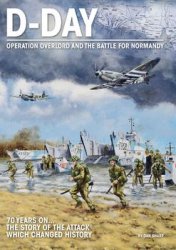Now they [the soldiers of Philip V of Macedon] saw bodies dismembered by the Spanish sword, arms cut off with the shoulder attached, or heads severed from bodies, with the necks completely sliced through, internal organs exposed, and other terrible wounds, and a general panic followed when they realised the kind of weapon and the kind of men they had to fight against.94
These Greek troops had previously seen only wounds inflicted by spears and arrows, and were shocked by the distinctive wounds caused by the stabbing and cutting of Roman sword-play. The skeletons recovered from Maiden Castle in Dorset, which probably belong to the men who defended the fort against Vespasian and the Roman invaders in ad 43, show evidence of several cutting wounds to the head, and in one case many wounds had been inflicted. But pila and arrows also inflicted penetrating wounds, and at Maiden Castle Roman artillery did a lot of damage. High-velocity bolts penetrated skulls, and in one case a catapult bolt had lodged in the victim’s spinal column (Plates 3.2 and 3.3).95
Despite their armour, Roman troops will have suffered both cutting and penetrative wounds and fractures, especially fractures of arms and legs, head wounds and fractures of the skull where the helmet had split, and also damage to the eyes, which were largely unprotected. Cornelius Celsus, who probably lived in the early first century ad and wrote on many topics including medicine, leaves a vivid and detailed account of the treatment of war wounds.96 Although he was strongly influenced by the work of Hippocrates and Greek medicine in general, he refers to his own experience in surgery. He mentions wounds caused by arrows, by other pointed weapon heads, and also by lead balls and stones, presumably fired by slingers. The doctor had to decide whether to extract the weapon, or to make an incision on the other side of the body and push it through while not causing any more damage. Celsus gives precise instructions on how to avoid damage

Plate 3.2 Skull from Maiden Castle
Source: Wheeler (1943), by permission of the Society of Antiquaries of London

Plate 3.3 Skeleton from Maiden Castle
Source: Wheeler (1943), by permission of the Society of Antiquaries of London
To blood-vessels and sinews, and recommends that in dealing with a barbed point reed sleeves should be put over the barbs to make extraction less hazardous. The doctor faced a special difficulty if the weapon had lodged in a bone; he might have to cut a triangular incision to aid release, and even give it a sharp knock. We can only imagine the pain of soldiers being treated in this way without anaesthetics, though some natural drugs were available. Celsus also describes a special implement for removing arrowheads, which seems rather complicated, and Paul of Aegina in his description of the removal of weapon points mentions a special kind of forceps.97 However, although surgical instruments of the Roman period have been discovered, there is no clear evidence of any special instruments for treating war wounds. It is interesting that in a Pompeian wall painting, which may reflect contemporary practice in the early empire, we see a figure removing an arrowhead from the thigh of Aeneas using a pair of pincers.98
Celsus presumably discussed all these techniques in detail because they were likely to be used, but it is not clear that there was any specialist training or a corps of military doctors. Men appear on inscriptions described as medici, and there is great debate about whether these are real doctors or what we would describe as medical orderlies.99 However, much of this is based on a misunderstanding. In the Roman world, in the absence of professional qualifications or accreditation, there was no such thing as a ‘qualified’ doctor. A man practising medicine (medicus) was either more or less experienced, and his reputation depended on the confidence he inspired in his patients. It is likely that there were skilled practitioners, often of Greek origin, who were attached to various units, and in the course of time they presumably acquired experience in dealing with wounds. During major campaigns commanders probably recruited more doctors skilled in surgery from wherever they could be found. It is clear that other soldiers acted in a lesser capacity, applying bandages and dressings on the battlefield, as in the famous depiction on Trajan’s column.10°The Roman imperial army certainly tried to look after its men. Trajan set the example by tearing up his own clothing to make bandages during his Dacian campaigns,101 and it was a sign of a perilous military situation if wounded troops had no dressings.102 There were presumably field hospitals or temporary treatment areas. In a story again from the Dacian campaigns, we hear how a badly wounded cavalryman was carried from the battlefield to a tent for treatment, and when he found that his wound was fatal rejoined the battle.103
There were of course military hospitals in the legionary camps, and these were carefully laid out with attention to the comfort of the patients and good sanitation. In hygienic conditions, properly set fractures and even deep wounds could heal.104 However, there is no doubt that in ancient warfare many wounds will have been fatal, through infection and lack of proper techniques.105 So, according to Paul of Aegina, if the weapon is lodged in a vital spot, ‘and if fatal symptoms have already shown themselves, as the extraction would cause much laceration, we must decline the attempt’. But he emphasizes that if there is a chance of saving the patient the doctor must go ahead, after first warning of the danger.106




 World History
World History









